Excavation Contractors Pembroke Pines
Find Excavation Contractor in Pembroke Pines
Receive up to 3 Excavating Contractors quotes for your project today! Compare profiles, reviews, accreditations, portfolio, etc... and choose the best offer.
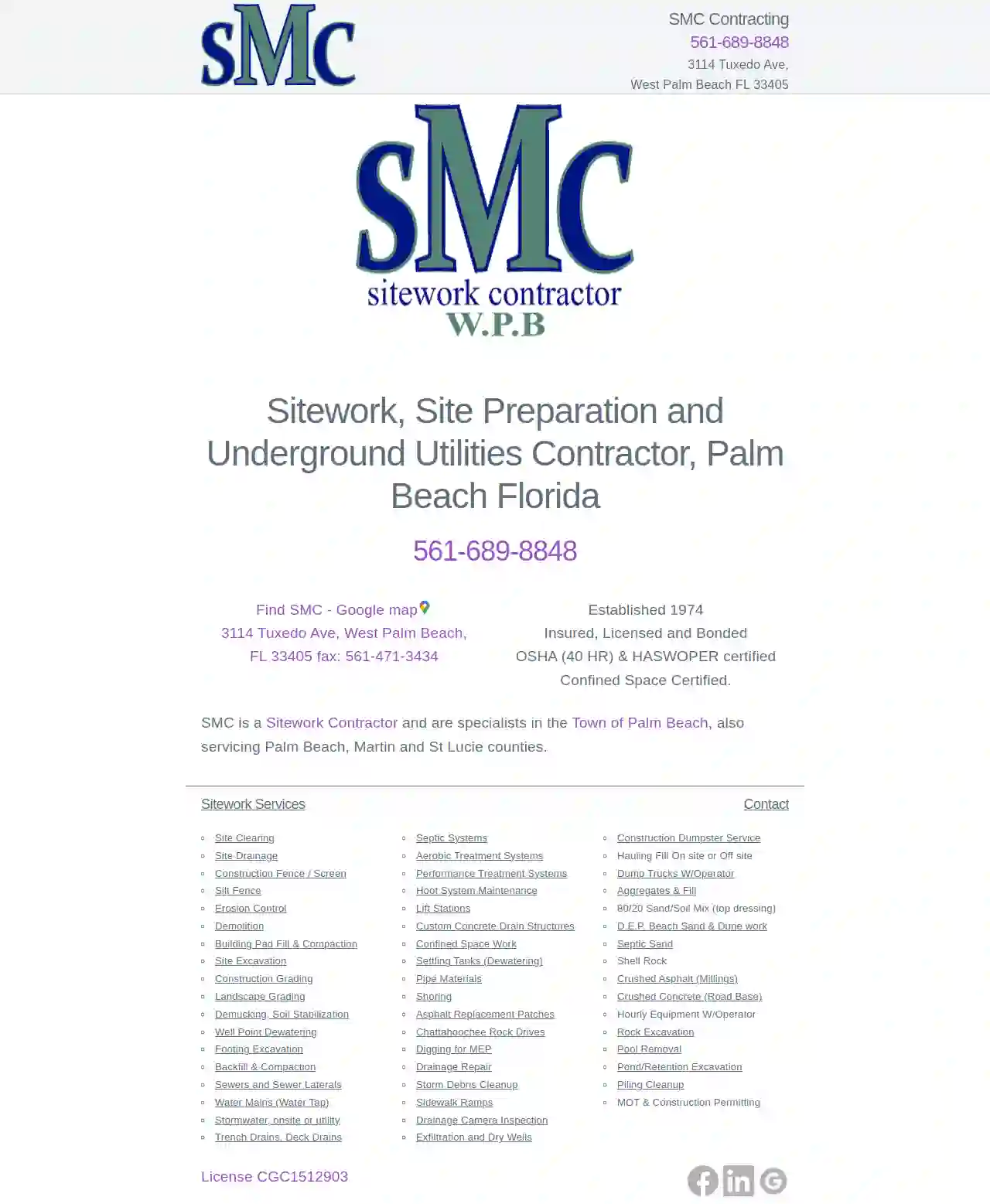
SMC Contracting
4.715 reviews3114 Tuxedo Ave, West Palm Beach, 33405, USSMC Contracting: Your Trusted Sitework Partner in Palm Beach County Established in 1974, SMC Contracting has been a leading provider of sitework, site preparation, and underground utility services in Palm Beach County, Florida. We are a family-owned and operated business with a commitment to quality, safety, and customer satisfaction. Our team of experienced professionals is dedicated to delivering exceptional results on every project, no matter the size or complexity. We take pride in our reputation for reliability, efficiency, and attention to detail. We are fully insured, licensed, and bonded, and we are committed to adhering to the highest industry standards. Our commitment to safety is evident in our OSHA (40 HR) & HASWOPER certifications, as well as our Confined Space Certification. SMC Contracting specializes in serving the Town of Palm Beach, but we also proudly serve Palm Beach, Martin, and St. Lucie counties. We are your one-stop shop for all your sitework needs, from site clearing and excavation to utility installation and landscaping. Contact us today to discuss your project and learn how SMC Contracting can help you achieve your goals.
- Services
- Why Us?
- Our Team
- Gallery
Get Quote- Gu
Gulf States Enterprises, Inc.
534 reviewsPensacola, US- Services
- Why Us?
- Gallery
Get Quote 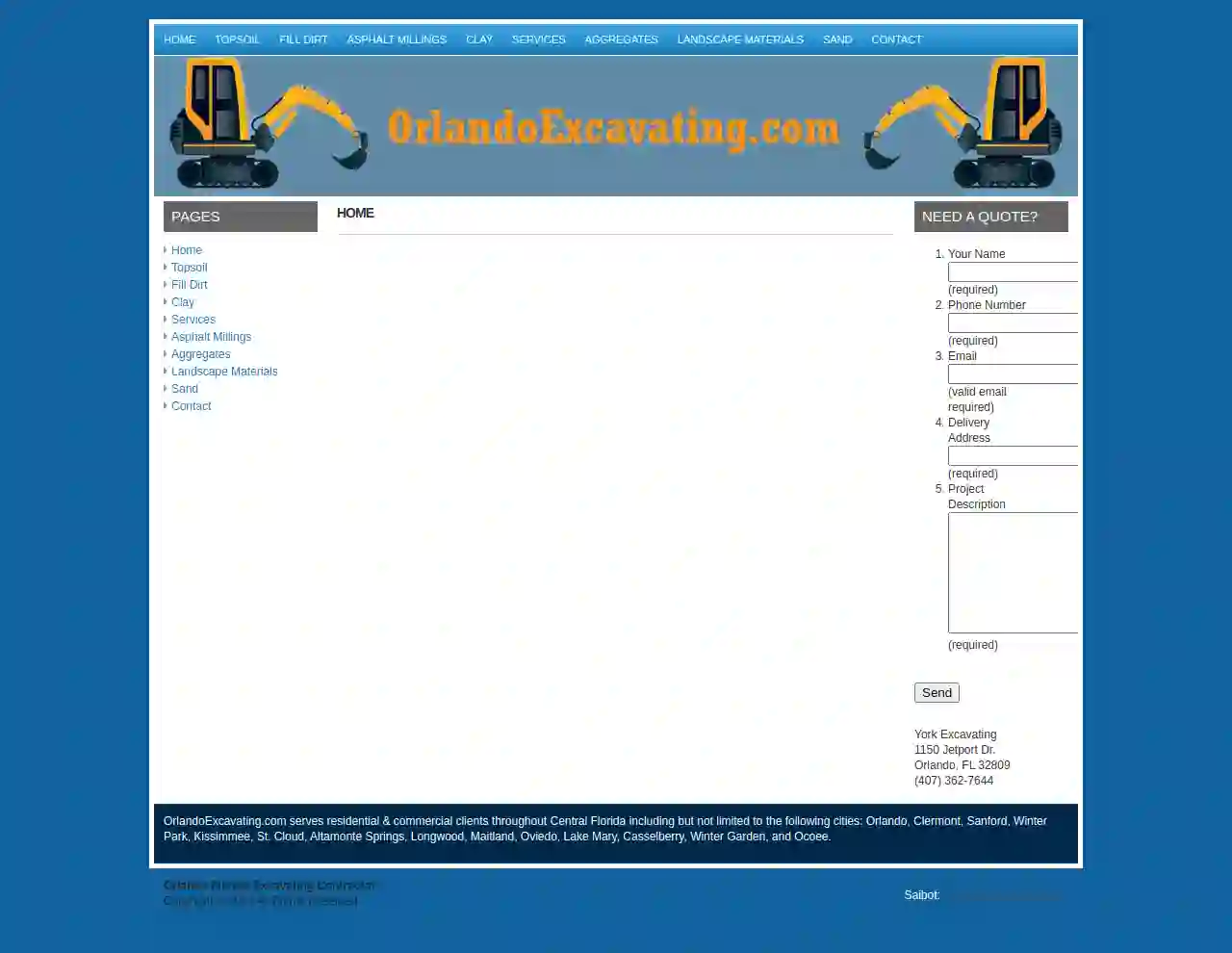
Orlando Florida Excavating Contractor
2.79 reviews1150 Jetport Dr., Orlando, 32809, USOrlando Excavating is a trusted excavating contractor serving residential and commercial clients throughout Central Florida. We offer a wide range of services, including topsoil, fill dirt, asphalt millings, clay, aggregates, landscape materials, and sand. Our team of experienced professionals is dedicated to providing high-quality services at competitive prices. We are committed to safety and environmental responsibility, and we strive to exceed our clients' expectations on every project. We are proud to serve the following cities in Central Florida: Orlando, Clermont, Sanford, Winter Park, Kissimmee, St. Cloud, Altamonte Springs, Longwood, Maitland, Oviedo, Lake Mary, Casselberry, Winter Garden, and Ocoee.
- Services
- Why Us?
Get Quote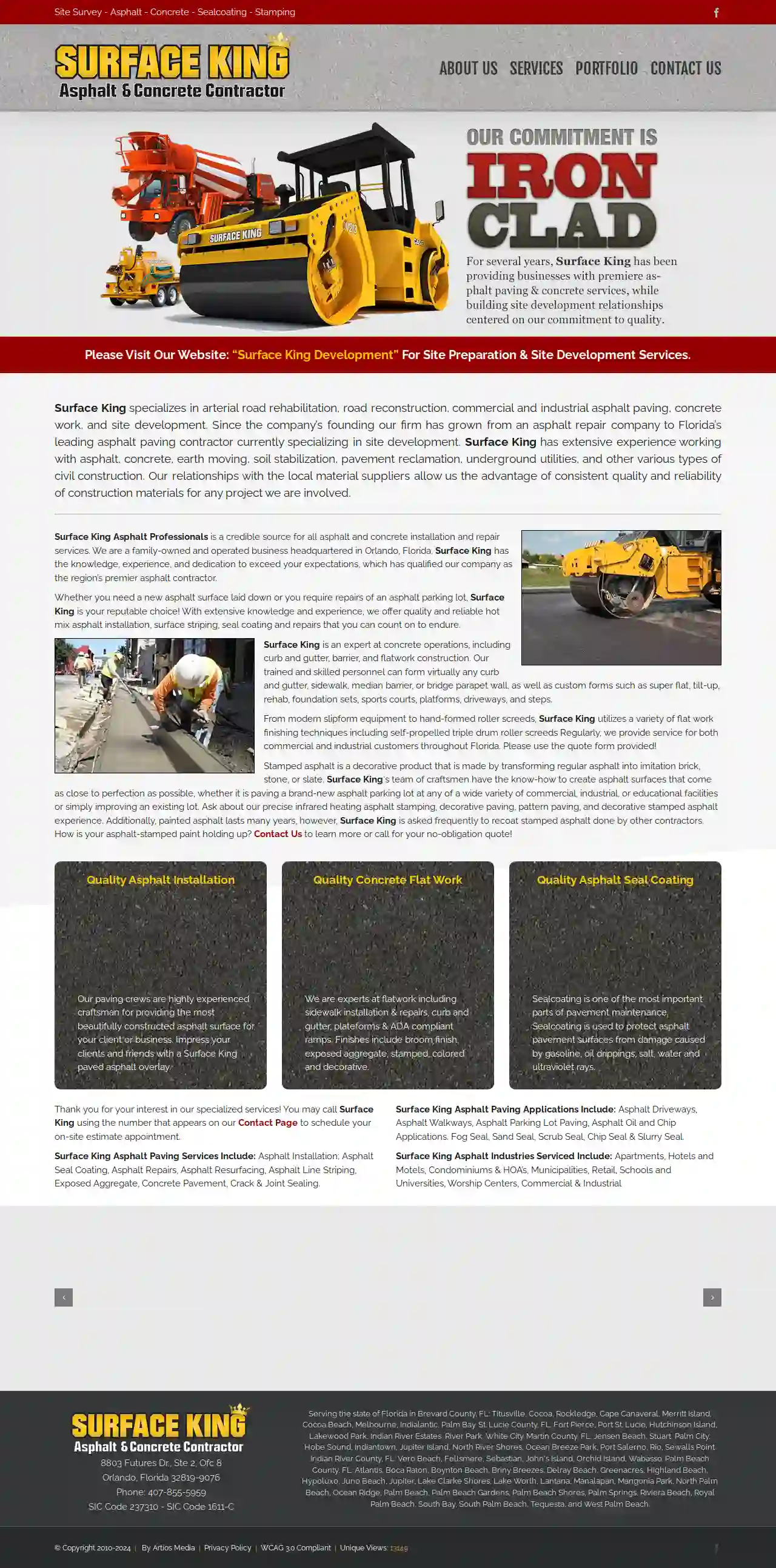
Surface King LLC
54 reviews8803 Futures Dr., Ste 2, Ofc 8, Orlando, 32819-9076, USSurface King: Your Premier Asphalt and Concrete Contractor in Florida Surface King is a family-owned and operated business headquartered in Orlando, Florida. We specialize in arterial road rehabilitation, road reconstruction, commercial and industrial asphalt paving, concrete work, and site development. Our team of experienced professionals has the knowledge, experience, and dedication to exceed your expectations, which has qualified our company as the region’s premier asphalt contractor. Since our founding, we've grown from an asphalt repair company to Florida's leading asphalt paving contractor, specializing in site development. We have extensive experience working with asphalt, concrete, earth moving, soil stabilization, pavement reclamation, underground utilities, and other various types of civil construction. Our relationships with local material suppliers allow us the advantage of consistent quality and reliability of construction materials for any project we are involved in. Whether you need a new asphalt surface laid down or you require repairs of an asphalt parking lot, Surface King is your reputable choice! With extensive knowledge and experience, we offer quality and reliable hot mix asphalt installation, surface striping, seal coating and repairs that you can count on to endure. Surface King is an expert at concrete operations, including curb and gutter, barrier, and flatwork construction. Our trained and skilled personnel can form virtually any curb and gutter, sidewalk, median barrier, or bridge parapet wall, as well as custom forms such as super flat, tilt-up, rehab, foundation sets, sports courts, platforms, driveways, and steps. From modern slipform equipment to hand-formed roller screeds, Surface King utilizes a variety of flat work finishing techniques including self-propelled triple drum roller screeds. Regularly, we provide service for both commercial and industrial customers throughout Florida. Please use the quote form provided! Stamped asphalt is a decorative product that is made by transforming regular asphalt into imitation brick, stone, or slate. Surface King‘s team of craftsmen have the know-how to create asphalt surfaces that come as close to perfection as possible, whether it is paving a brand-new asphalt parking lot at any of a wide variety of commercial, industrial, or educational facilities or simply improving an existing lot. Ask about our precise infrared heating asphalt stamping, decorative paving, pattern paving, and decorative stamped asphalt experience. Additionally, painted asphalt lasts many years, however, Surface King is asked frequently to recoat stamped asphalt done by other contractors. How is your asphalt-stamped paint holding up? Contact Us to learn more or call for your no-obligation quote!
- Services
- Why Us?
- Gallery
Get Quote
HHH Construction of NWF, Inc
51 reviews8190 Belle Pines Lane, Pensacola, 32526, USHHH Construction: Your Trusted Partner for Construction Services in Northwest Florida HHH Construction is a reputable and experienced construction company serving Northwest Florida. We specialize in a wide range of services, from site preparation and land clearing to drainage and environmental restoration. Our team of skilled professionals is dedicated to providing high-quality workmanship and exceptional customer service. We understand that every project is unique, and we work closely with our clients to ensure their vision is realized. Our commitment to safety, efficiency, and environmental responsibility sets us apart as a leader in the industry. Whether you're a homeowner, business owner, or government agency, HHH Construction is your one-stop shop for all your construction needs. Contact us today for a free consultation and let us help you bring your project to life.
- Services
- Why Us?
- Gallery
Get Quote
Dirty South Land Management
1Robertsdale, USDirty South Land Management Based in Robertsdale, AL, Dirty South Land Management offers professional land clearing services in the surrounding areas with expertise in clearing, grading, and site preparation projects. About Us At Dirty South Land Management, we are a team of experienced professionals dedicated to providing top-notch land clearing services in Robertsdale, AL and surrounding areas. With our specialized equipment and expertise, we tackle projects big and small with precision and efficiency. Trust us to transform your property into a clean slate for future developments.
- Services
- Why Us?
- Testimonials
- Gallery
Get Quote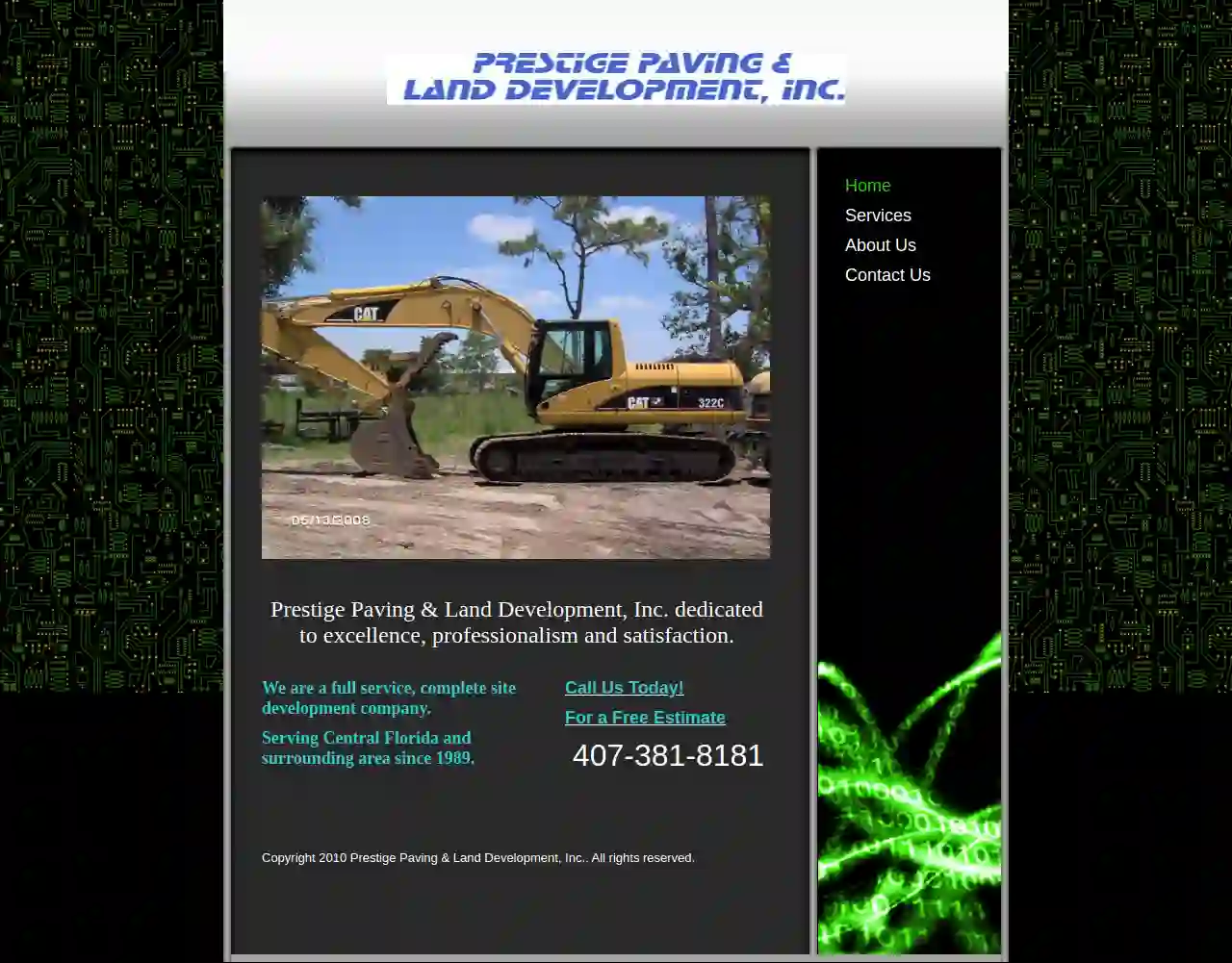
Prestige Paving & Land Development, Inc.
3.47 reviewsOrlando, USPrestige Paving & Land Development, Inc. is dedicated to excellence, professionalism, and satisfaction. We are a full-service, complete site development company serving Central Florida and the surrounding area since 1989. Call us today for a free estimate!
- Services
- Why Us?
- Gallery
Get Quote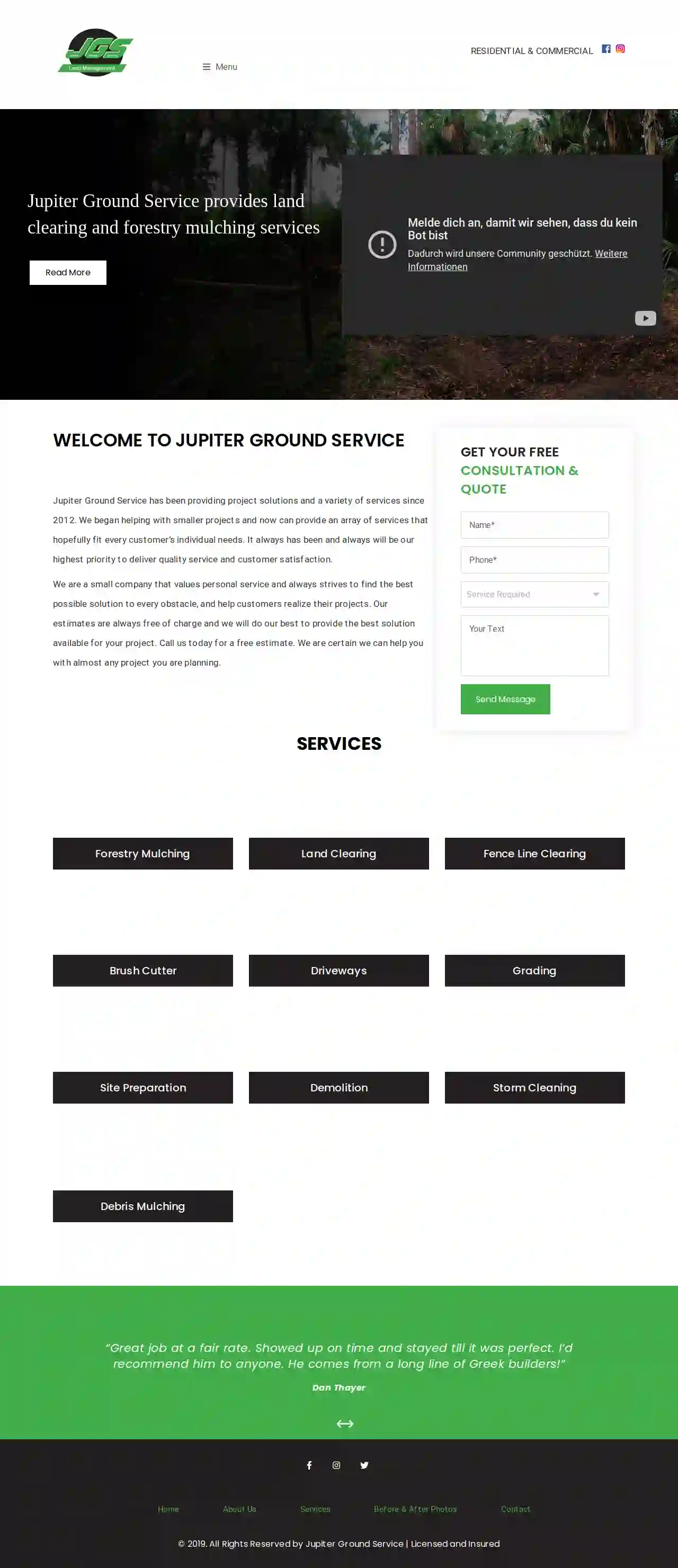
Jupiter Ground Service LLC
4.912 reviewsPort St. Lucie, USWelcome to Jupiter Ground Service Jupiter Ground Service has been providing project solutions and a variety of services since 2012. We began helping with smaller projects and now can provide an array of services that hopefully fit every customer’s individual needs. It always has been and always will be our highest priority to deliver quality service and customer satisfaction. We are a small company that values personal service and always strives to find the best possible solution to every obstacle, and help customers realize their projects. Our estimates are always free of charge and we will do our best to provide the best solution available for your project. Call us today for a free estimate. We are certain we can help you with almost any project you are planning.
- Services
- Why Us?
- Testimonials
- Gallery
Get Quote
Things & Stuff LLC Tractor Excavation Land Clearing and Forestry Mulching
532 reviews2506 Timbercreek Loop E., Lakeland, 33805, USAbout Things & Stuff LLC A Lakeland, Florida native, I've been self-employed since I was about 12 years old. I started with my own neighborhood lawn business, then expanded to pallet wall and furniture building. Eventually, I moved into home repairs and rehabs. But after purchasing my first tractor, there was no turning back. I established my own LLC for my tractor, skid steer, and excavation company, becoming fully licensed and insured. I continue to add equipment to make my services more affordable (by avoiding rental costs). Recently, I've added dumpster rental and demo to my services, launching Junk That Stuff as a new division. I'm committed to continuous learning and growth in my business, ensuring I'm better equipped to serve you, my valued customer. Things & Stuff is my passion, and honesty and reliability are the cornerstones of my company. I've been working with earth moving machinery for a significant amount of time. From a young age, I've honed my skills to meet the diverse needs of my clients. As a small business, I've experienced steady growth while maintaining a personal touch, providing my customers with the attention they deserve and expect. Customer satisfaction is my top priority, and my goal is to build lasting relationships with repeat customers. "~Things & Stuff, owned and operated by Jonathan Edwards"
- Services
- Why Us?
- Our Team
- Gallery
Get Quote
Bloodgood Construction
51 reviews682 NW 34th st, Miami, 33127, USBloodgood Construction We are a Florida State Certified Building Contractor. Contact us regarding your construction project. Services Offered Residential Construction Commercial Building Remodeling of existing buildings Custom fabrication / Cabinetry / Millwork Construction Consulting Engineering Architectural design Project management About Us Grant Bloodgood, the founder, studied design at Parsons in New York and holds a Masters of Fine Arts Degree in Multimedia with a concentration in Sculpture. With over 30 years of experience, he brings his artistic vision and skilled craftsmanship to every project, transforming your home or dream into a reality. Our Approach We design custom architectural solutions, providing engineering and architectural design services within our team. We understand your design needs and offer solutions that streamline the process from conceptual renderings, zoning surveys, marketing analysis, and complete design plans. Quality Construction We have a local team of skilled craftsmen with over thirty years of experience in residential and commercial construction. We are committed to building the highest quality spaces, exceeding your expectations and bringing your dreams to life. Heritage Builder Our dedication to craftsmanship is a tradition rooted in taking pride in our work. We build "heritage" houses, homes designed to last over a century. At Bloodgood Construction, this European tradition continues. Craftmanship Regardless of style, craftsmanship is timeless. We apply the same high standards and quality to all our projects, whether it's a residential home or a commercial space. The Restaurant We specialize in custom millwork and commercial construction. Our commitment to quality and standards remains unwavering across all our projects.
- Services
- Why Us?
Get Quote
Over 3,943+ Excavation Companies registered
Our excavation providers operate in Pembroke Pines & surrounding areas!
ExcavationHQ has curated and vetted Top Excavation Pros in and around Pembroke Pines. Find a top & reliable contractor today.
Frequently Asked Questions About Excavation Contractors
- Excavations Deeper Than a Certain Depth: This varies by jurisdiction, usually around 5 feet.
- Excavations Near Utilities: Digging near buried utilities (gas, water, electric) often requires permits and utility locates to prevent damage.
- Excavations Affecting Public Property: Projects impacting sidewalks, roads, or other public areas typically require permits.
- Excavations in Environmentally Sensitive Areas: Projects in wetlands, floodplains, or other sensitive areas might need special permits.
- Clearly Define the Scope: Outline the project's goals, including the excavation area, depth, grade, and intended use.
- Obtain Necessary Permits: Research and acquire any required permits from your local authorities.
- Mark Utility Lines: Contact your utility companies to locate and mark underground utilities to prevent damage.
- Communicate with Neighbors: Inform your neighbors about the project's timeline and potential noise or disruptions.
- Prepare the Site: Clear any obstacles, such as vegetation, furniture, or structures, from the excavation area.
- Discuss Safety Protocols: Review safety procedures with the contractor to ensure a safe work environment.
Do I need a permit for excavation?
What should I do before excavation starts?
What is the difference between excavation and grading?
Excavation: Primarily involves removing earth or other materials from a site. It's about digging down and creating space.
Grading: Focuses on shaping and leveling the ground to a specific slope or elevation. It's about adjusting the existing terrain.
For example, you might excavate a foundation and then grade the surrounding area to ensure proper drainage and a level surface for landscaping.
What is the difference between topsoil and subsoil?
Topsoil: The uppermost layer, typically rich in organic matter, nutrients, and microorganisms. It's essential for plant growth and is often darker in color.
Subsoil: The layer beneath the topsoil, containing less organic matter and generally denser. It provides support for roots but is less fertile than topsoil.
During excavation, topsoil is often removed and preserved separately for later use in landscaping, while subsoil is typically used for backfilling or other less demanding applications.
Do I need a permit for excavation?
- Excavations Deeper Than a Certain Depth: This varies by jurisdiction, usually around 5 feet.
- Excavations Near Utilities: Digging near buried utilities (gas, water, electric) often requires permits and utility locates to prevent damage.
- Excavations Affecting Public Property: Projects impacting sidewalks, roads, or other public areas typically require permits.
- Excavations in Environmentally Sensitive Areas: Projects in wetlands, floodplains, or other sensitive areas might need special permits.
What should I do before excavation starts?
- Clearly Define the Scope: Outline the project's goals, including the excavation area, depth, grade, and intended use.
- Obtain Necessary Permits: Research and acquire any required permits from your local authorities.
- Mark Utility Lines: Contact your utility companies to locate and mark underground utilities to prevent damage.
- Communicate with Neighbors: Inform your neighbors about the project's timeline and potential noise or disruptions.
- Prepare the Site: Clear any obstacles, such as vegetation, furniture, or structures, from the excavation area.
- Discuss Safety Protocols: Review safety procedures with the contractor to ensure a safe work environment.
What is the difference between excavation and grading?
Excavation: Primarily involves removing earth or other materials from a site. It's about digging down and creating space.
Grading: Focuses on shaping and leveling the ground to a specific slope or elevation. It's about adjusting the existing terrain.
For example, you might excavate a foundation and then grade the surrounding area to ensure proper drainage and a level surface for landscaping.
What is the difference between topsoil and subsoil?
Topsoil: The uppermost layer, typically rich in organic matter, nutrients, and microorganisms. It's essential for plant growth and is often darker in color.
Subsoil: The layer beneath the topsoil, containing less organic matter and generally denser. It provides support for roots but is less fertile than topsoil.
During excavation, topsoil is often removed and preserved separately for later use in landscaping, while subsoil is typically used for backfilling or other less demanding applications.